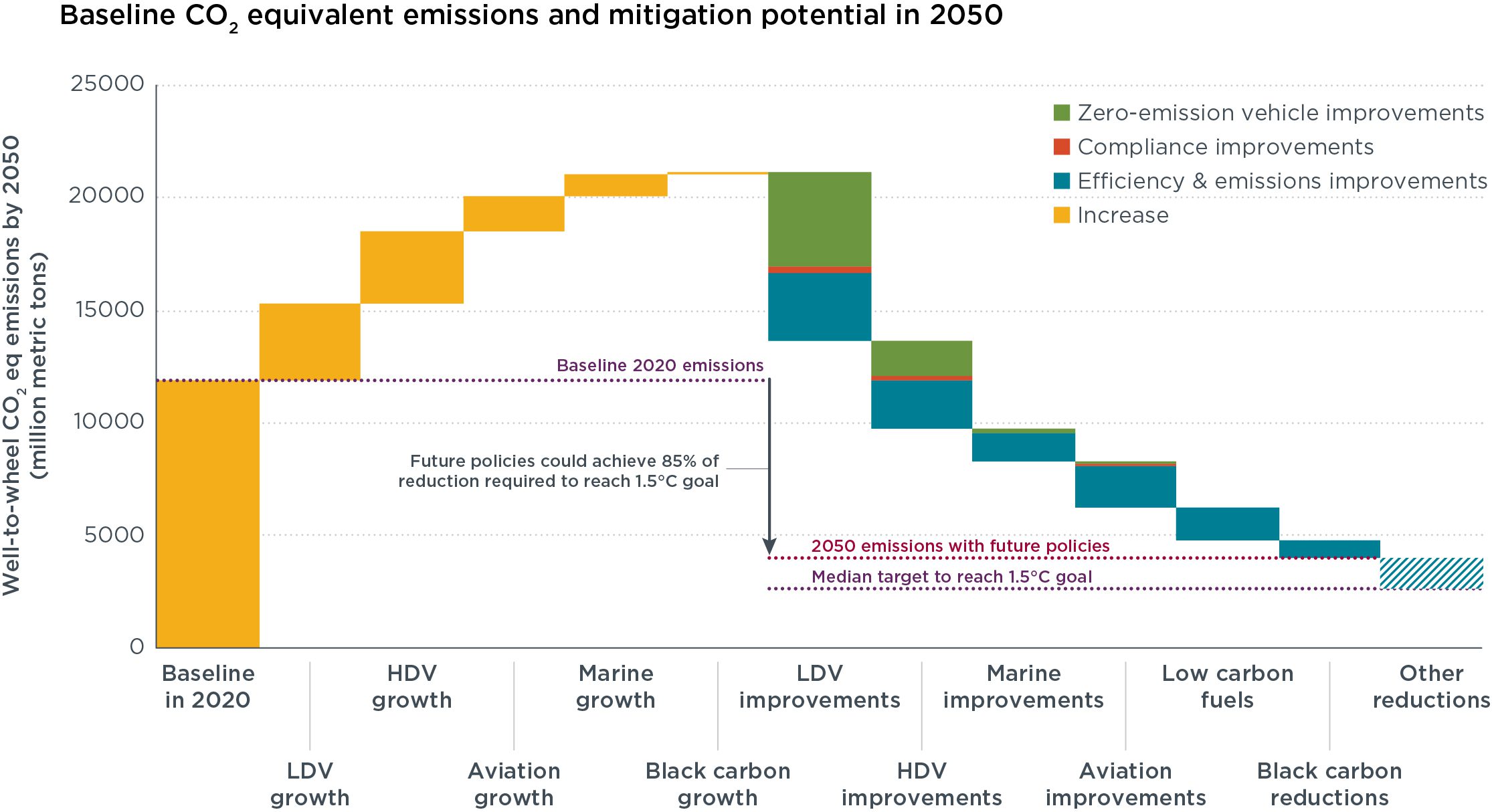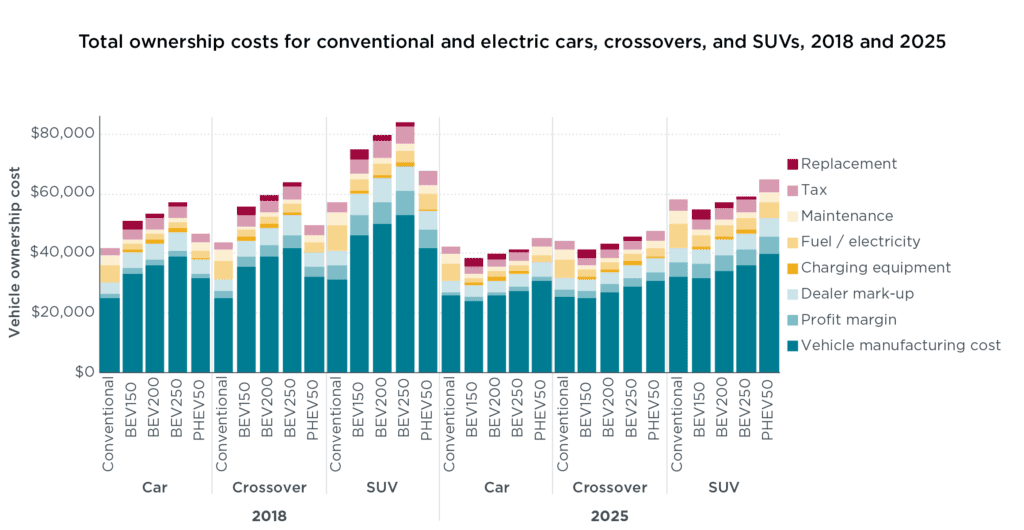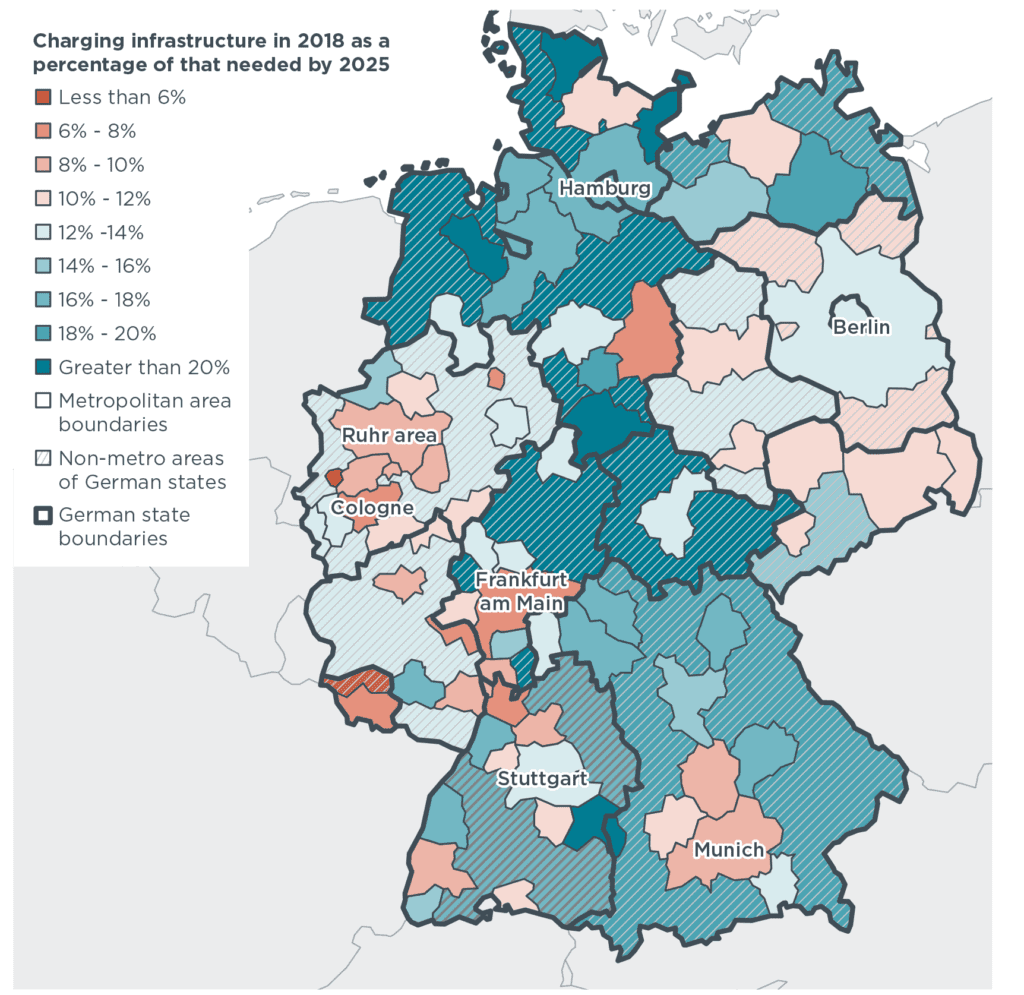Home > Our Impact > Vehicles and Fuel

Vehicles and Fuel
The ICCT was established in 2001 as an independent source of
technical and policy expertise on clean transportation with the core mission of
improving the environmental performance and energy efficiency of road, marine,
and air transportation, in order to benefit public health and mitigate climate
change. In the last five years alone, we have worked successfully with
regulators and lawmakers around the world and have played a significant role in
48 distinct regulations and policies, which are together projected to result in
billions of tons of carbon dioxide reductions and prevent thousands of
premature deaths over the next decade and beyond.
Mitigation Potential
The chart on the right shows factors driving up global GHG emissions in a baseline case reflecting only policies that governments had adopted as of February 2019. It also shows the potential impact of efficiency improvements, zero-emission vehicle growth, and improved compliance from each segment of the transport sector. The hatched bar indicates the gap remaining between the mitigation potential from such policies, targeting our transportation technologies, and GHG emissions low enough to limit global warming to 1.5°C—a gap that can be filled by a range of other policy actions.
Electric Vehicle Market Trends
Electrification is the key to decarbonizing the transport sector. Our immediate focus is on policies to increase the sales fraction of electric passenger vehicles, 2- and 3-wheelers, and urban buses. In these vehicle segments, we project that EV sales must reach between 35% and 75% of the global market in 2030, and exceed 75% before 2050.
A sharp picture of market trends emerges by looking at the “EV capitals,” a few dozen cities around the world that account for a disproportionate share of sales. These cities strengthen national policies with vigorous local actions to drive and shape EV markets. The chart on the right, for example, shows electric passenger vehicle registrations and share of new vehicles in selected EV capitals in China, Europe, and the United States from 2015 to 2019.
Total Cost of Ownership
Two factors will be particularly important in the near term to electrifying transportation. One is the cost to consumers to buy and operate an electric vehicle—the “total cost of ownership.” The trends suggest that cost parity between EVs and conventional vehicles will be realized very soon. The chart to the right shows our projection, based on 2018 data, that in the United States the total cost of ownership of both low-range (BEV150) and mid-range (BEV250) battery-electric vehicles will fall below that of comparable conventional vehicles in the car, SUV, and crossover vehicle segments by 2025.
Charging Infrastructure
The second factor important to electrifying transportation is charging infrastructure. A new focus in our work is helping municipal and national governments quantify gaps between installed public charging infrastructure, planned expansion, and estimates of need based on numerous factors, such as housing types, charging access, and rates of vehicle ownership. The map below summarizes a recent analysis of the situation in Germany, as an example.






